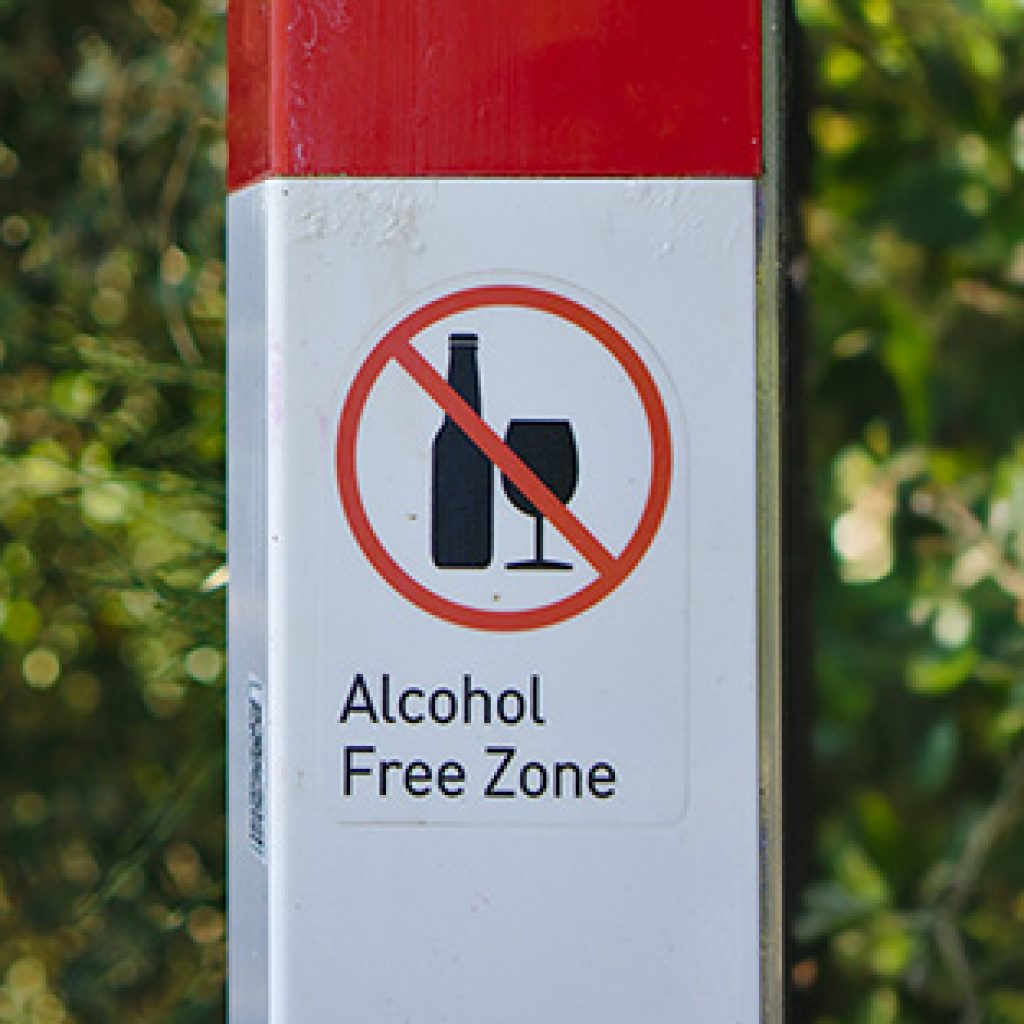What Behavioral Health Providers in Nevada Need to Know About Veterans and Suicide
Editor’s Note: This post has been updated and republished. To read the updated version follow this link.
What Behavioral Health Providers in Nevada Need to Know About Veterans and Suicide
We have written previously in The Catalyst about the scope of prevalence and public health impact of suicide in the United States, outlining the fact that suicide increased 30% from 2000 to 2016, is the tenth leading cause of death in the U.S., and the second cause of death for those 15-19 years old –Zero Suicide – Can We Get There?. In Suicide Contagion: Unintended Consequences of Celebrity Suicide we wrote of the increased risk of suicide contagion, or the exposure to suicide or suicidal behaviors within one’s family, one’s peer group, or through media reports of suicide, and how it can increase suicide and suicidal behaviors. That post included warning signs of suicide and what states, health care systems, employers, communities, schools, the media, and others can do to help prevent suicide. Another blog post, Suicide and the Crisis Text Line, focused on how implementation of the Crisis Text Line in 2013 provides a way for those in crisis to get immediate help. Over 65,671,191 text messages have been exchanged between crisis counselors and those in need since August of 2013. The issue of suicide is further positively impacted by the Crisis Text Line partnerships with behavioral health facilities at national, state, and local levels, use of de-identified text data by researchers, and use of the same data to advocate and inform the public, media, government, schools, and others.
Finally, in Suicide In Nevada: Are We Making Progress we brought the issue home to Nevada, with a compelling infographic for Nevada for 2018 from the American Foundation for Suicide Prevention and the fact that, on average, one person dies by suicide every 13 hours in Nevada. Historically Nevada has had one of the highest rates of suicide in the country along with Alaska, Montana, Arizona, Colorado, Utah, New Mexico, and Wyoming. We cited research providing insights into why common physical, cultural, and social economic factors among these states contribute to higher suicide numbers. And we shared many of the grassroots efforts, strategies, partnerships, and programs that have been created to address suicide in Nevada as well as the progress that has been made. According to the new infographic for Nevada for 2019, progress has been made. For 2019, one person dies by suicide, on average, every 14 hours in Nevada instead of every 13 hours, suicide is the overall 8th cause of death in the state rather than the 7th, and Nevada currently ranks 12th in the nation in suicides compared to 6th in 2018. While progress is being made in suicide prevention overall in Nevada and across the nation, there is still more work to be done. Research and resulting data show preventing suicide among Veterans is an important priority both nationally and in Nevada.
VA National Suicide Data Report 2005-2016 Key Findings
The most recent VA National Suicide Data Report is based on data from all states and the District of Columbia based on National Death Index mortality data through 2016:
- There were more than 6,000 Veteran suicides each year from 2008 to 2016. (According to the US census, in 2005 there were 23,427,584 Veterans in the United States; in 2016 that number had dropped to 18,496,937.)
- From 2005 to 2016, Veteran and non-Veteran adult suicide rates increased 25. 9 percent and 20.6 percent, respectively. From 2015 to 2016, Veteran suicide rates decreased from 30.5 per 100,000 population to 30.1 per 100,000 population.
- In 2016, the suicide rate was 1.5 times greater for Veterans than for non-Veteran adults, after adjusting for age and gender.
- In 2016, 69.4 percent of Veteran suicides resulted from a firearm injury. In comparison, among U.S. non-Veteran adults, 48.4 percent of suicides resulted from a firearm injury in 2016.
- The suicide rates for Veterans ages 35–54, 55–74, and 75 and older did not increase from 2015 to 2016.
- The suicide rate for Veterans ages 18–34 increased substantially, from 40.4 suicide deaths per 100,000 population in 2015 to 45 suicide deaths per 100,000 population in 2016.
- Considering unadjusted and age-adjusted suicide rates for 2016, Veterans recently using VHA services had higher rates of suicide than Veterans who did not recently use VHA, Veterans overall, and non-Veterans.
- From 2005 to 2016, there was a lower increase in the suicide rate among Veterans in VHA care (13.7 percent) than among Veterans who were not in VHA care (26.0 percent).
- After adjusting for age, in 2016, the suicide rate for women Veterans was 1.8 times greater than the suicide rate for non -Veteran women.
- The number of suicides among never federally activated National Guard and Reserve former Service members increased from 2005 to 2015.
To sum up the data “In 2016, the most recent data available, the suicide rate for Veterans was 1.5 times greater than for Americans who never served in the military. About 20 Veterans a day across the country take their own lives, and Veterans accounted for 14 percent of all adult suicide deaths in the U.S. in 2016, even though only 8 percent of the country’s population has served in the military.” –Leo Shane III, Military Times
According to these data some progress has been made in decreasing the number of Veteran suicides from 2015 to 2016. Also, from 2015 to 2016, the rate of Veteran suicide decreased from 30.5 per 100,000 to 30.1 per 100,000. Yet the overall suicide rate for Veterans remains 1.5 times greater than for non-Veterans in 2016. According to the Centers for Disease Control (CDC) of the 42,773 suicides in 2014 in the United States, or 117 suicides each day, 18 percent, or about 21 are Veterans. Despite the progress being made, the issue of Veterans and suicide is still a national health concern that the VA is working to address for all Veterans (US Department of Veterans Affairs, 2019).
Risk Factors for Veteran Suicide
According to studies cited on the VA Office of Research and Development (ORD) website under New, Ongoing, and Published Research, research studies on suicide prevention point to a variety of risk factors for suicide for Veterans. Among those risks are:
- coping with aging, stress, or lingering effects stemming from their military service that have never been addressed;
- underlying mental health conditions or substance use disorders, in some cases aggravated by their military service, which increases their risk;
- and recently discharged Veterans who have difficulty with personal relationships or their transition back to civilian life;
- behavioral health conditions such as depression;
- major stressful events, such as the loss of a loved one;
- and physical health problems, such as chronic pain.
Other issues that may contribute to increased risk are issues related to sleeplessness, anger, or disturbing memories of combat service. VA researchers are working to develop effective interventions that address multiple conditions at the same time and to identify optimal time periods for intervention. A complete list of research being conducted by the VA can be found on the Office of Research and Development website under VA ORD-Wide Programs. With the Evidence-based Synthesis Program (ESP) the VA is working to discover methods both to identify Veterans who are at increased risk for suicide and to increase effective interventions for reducing suicide and self-directed violence. The ESP program includes four ESP Centers across the nation, each affiliated with a university and using an internal peer review for evaluating research. To date, six of eight studies of interventions using subjects in the Air Force Suicide Prevention Program an Army infantry division deployed to Iraq, and studies of police, college students, and health systems, have found lower suicide rates after interventions that were studied. Links to the full articles are published in a searchable database on the Health Services Research & Development ESP Synthesis Program Reports website.
Programs Within the VA to Address Suicide
The following are some of the VA programs available to help prevention Veteran suicide:
- Veterans Crisis Line at 1-800-273-8255 (1-800-273-TALK). The hotline was established in 2007 and is staffed by mental health professionals 24 hours a day, seven days a week. VA also offers a texting service at #838255.
- VA recently launched the S.A.V.E. online suicide prevention training video in collaboration with PsychArmor Institute, a national nonprofit providing online education and support to those who work with, live with, or care for Service members, Veterans, and military and Veteran families. S.A.V.E. — which stands for “Signs,” “Ask,” “Validate,” and “Encourage” and “Expedite” — offers simple steps that anyone can take when talking with Veterans who are at risk for suicide.
- Veterans and their families can chat online with trained counselors at VeteransCrisisLine.net.
- The VA has full-time suicide prevention coordinators at each of its 145 hospitals.
- VA’s Center of Excellence for Suicide Prevention, located at the Canandaigua, New York, VA Medical Center, has a mission to reduce occurrences of suicide, primarily by studying and applying public health approaches to suicide prevention.
- VA’s Rocky Mountain Mental Illness Research, Education, and Clinical Center (MIRECC) studies suicide with the goal of reducing suicide in the Veteran population.
- VA is part of the Military Suicide Research Consortium, a partnership with DoD that manages studies to increase knowledge on topics such as risk assessment, treatment, and prevention as they pertain to suicidal behavior in the military and among Veterans.
In addition to the above programs, in 2016, Dr. David Shulkin, then VA’s Under Secretary for Health announced the following additional steps to reduce Veteran suicide:
- Elevating VA’s Suicide Prevention Program with additional resources to manage and strengthen current programs and initiatives.
- Meeting urgent mental health needs by providing Veterans with same-day evaluations and access to care by the end of calendar year 2016.
- Establishing a new standard of care by using measures of Veteran-reported symptoms to tailor mental health treatments to individual needs.
- Launching a new study, “Coming Home from Afghanistan and Iraq,” to look at the impact of deployment and combat as it relates to suicide, mental health, and well-being.
- Using predictive modeling to guide early interventions for suicide prevention.
- Using data on suicide attempts and overdoses for surveillance to guide strategies to prevent suicide.
- Increasing the availability of naloxone rescue kits throughout VA to prevent deaths from opioid overdoses.
- Enhancing Veteran mental health access by establishing three regional tele-mental health hubs.
- Partnering with the Department of Defense on suicide prevention and other efforts for a seamless transition from military service to civilian life.
Veteran Suicide in Nevada
The Nevada Veteran Suicide Data Sheet is a collaborative effort of the VA, the U.S. Department of Defense (DoD), and the National Center for Health Statistics (NCHS). The most recent data analyzed is from 2014, when there were 127 Nevada Veteran Suicide Deaths. After adjusting for age difference, the Veteran suicide rate in Nevada was significantly higher that the national Veteran suicide rate (p=0.0005). at 59.8 compared to 38.4 (deaths per 100,000). The Western Region (Alaska, Arizona, California, Colorado, Hawaii, Idaho, Montana, Nevada, New Mexico, Oregon, Utah, Washington, and Wyoming) Veteran suicide rate was 45.5. One example of programs that aim to address Veteran suicides in Nevada are the Mayor’s Challenge to prevent suicide among service members, Veterans, and their families, sponsored by the VA and the Department of Health and Human Services’ Substance Abuse and Mental Health Services Administration (SAMHSA). Las Vegas was one of seven cities nationwide that were selected to participate based on Veteran population, suicide prevalence rates, and the capacity of each to lead in the first phase of the effort. Another example is an effort to reduce Veterans’ homelessness in Southern Nevada that is connected with the Homeless Veterans program. Results of the Nevada program are promising, with Housing and Urban Development (HUD) Point In Time (PIT) data showing that overall homelessness in Clark County had been reduced by 14 percent in 2018. This federal and community partnership helps to address suicide and other issues by assisting Veterans with shelter and other housing needs.
Things Behavioral Health Providers in Nevada Can Do
- Become familiar with resources specifically for Veterans and especially those connected with the VA, such as Signs of Crisis and S.A.V.E. Online Suicide Prevention Online Training. Many times those are the most relevant resources and ones Veterans feel safe using themselves, especially if they are still connected to military service. The Veterans Self-Check Quiz is a great confidential, anonymous risk assessment for Veterans that connects them to chat and other options quickly and at a level of intervention that is up to each individual.
- Get up to date with Nevada-specific resources, such as the Suicide Prevention Resource Center, the State of Nevada Office of Suicide Prevention, and the Nevada Coalition for Suicide Prevention.
- Look into Zero Suicide and how to use systems changes within health and behavioral health systems for suicide prevention.
- Check our Suicide Contagion post to learn how to raise awareness and help people in Nevada communities without increasing suicidal ideation.
- Find out about the Crisis Text Line and other resources and spread the word about them in your practice, on your websites, and mention them to your clients and their families.
- Keep up and get involved with programs that prevent Suicide In Nevada and training opportunities in Nevada that are making a difference.
- Attend the Nevada Suicide Prevention Conference Connectiveness Matters: Integrating Systems to Promote Connectedness October 17-18, 2019 in Las Vegas, Nevada with optional Pre-Conference Workshops on Wednesday, October 16, 2019.
Related CASAT OnDemand Materials
Use CASAT’s Learning Labs to dive deeper into a topic to increase topic literacy, knowledge, skills, and overall competency.
Use CASAT’s Resources and Downloads section to search for information, resources, and tools for any topic.
References
Department of Veterans Affairs, Veterans Health Administration, Office of Mental Health and Suicide Prevention. Veteran Suicide Data Report, 2005–2016. September 2018. https://www.mentalhealth.va.gov/docs/data-sheets/OMHSP_National_Suicide_Data_Report_2005-2016_508.pdf
Department of Veterans Affairs, Veterans Health Administration, Office of Mental Health and Suicide Prevention. https://www.mentalhealth.va.gov/suicide_prevention/index.asp retrieved 6.25.2019
Blog Post Tags:
Related Blog Posts
Related Learning Labs
Related Resources
.
- Buscar Tratamiento de Calidad para Trastornos de uso de Sustancia (Finding Quality Treatment for Substance Use Disorders Spanish Version)
- Finding Quality Treatment for Substance Use Disorders
- Focus On Prevention: Strategies and Programs to Prevent Substance Use
- Monthly Variation in Substance Use Initiation Among Full-Time College Students
- The National Survey on Drug Use and Health (NSDUH) Report: Monthly Variation in Substance Use Initiation Among Adolescents








